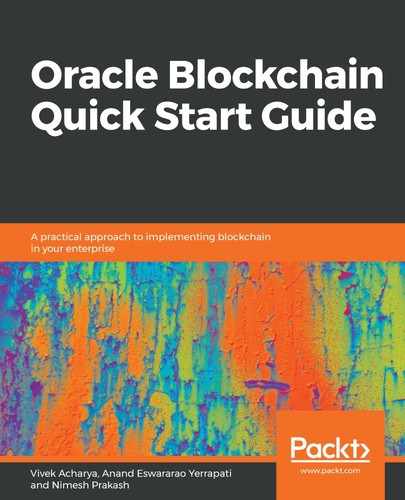An OBP instance (aka blockchain instance for this book) is a collection of containers that includes peer nodes, an orderer, an operation console, a CA, a REST proxy, and chaincodes. OBP instance is integrated with identity management to manage users and roles. It also integrates with Oracle object storage to dynamically back up configuration changes and the ledger and restore when required. The Oracle object storage takes a backup of all the components in the blockchain instance, which includes all the block files of a ledger, which also includes the data in the system channel and customer channel, the list of channels, the latest checkpoints, the source code of chaincodes, configuration files, and the provisioning files of the nodes and log files. This backup and restore process will be done automatically in OBP without giving the user notice. So, there is no need for the user to worry about data backup. OBP uses Oracle Event Hub cloud service as dedicated Kafka for the orderers. Default REST proxies are available to integrate OBP with any other applications, such as SaaS, PaaS, on-premise, or other third-party applications.
By now, you should know that blockchain is very resource intensive because it requires many containers with lots of storage. Since OBP is running on the Oracle Cloud, the storage, scalability, and high availability of the services will be taken care of by Oracle.
OBP is available in two ways. One is by installing a pre-built VM provided by Oracle, and the other option is to create an account in Oracle cloud and provision the blockchain platform from the portfolio of services. Except for the initial steps to access and create a blockchain instance, all other features and navigation are the same. Let's see each one these ways of provisioning OBP.
